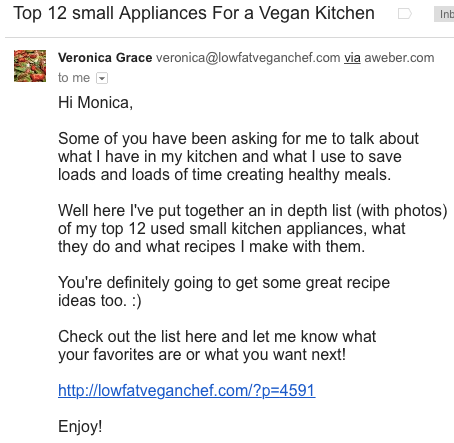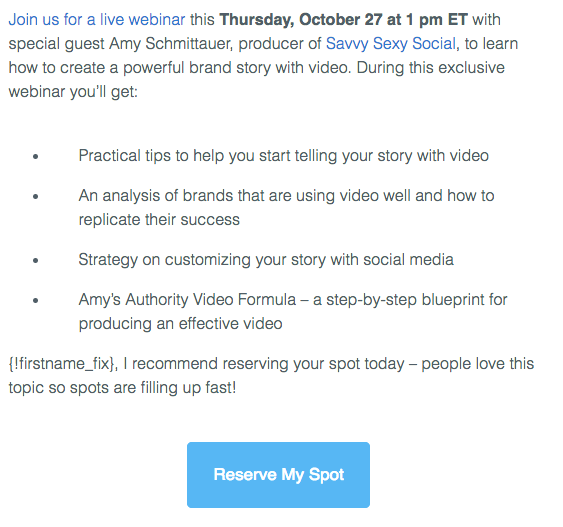Email Writing Hacks: 6 Writing Tips for Any Kind of Email
By Pam Neely March 17, 2022
Rather watch or listen? Cool, here you go:
Most of us are not born writers. And yet we spend hours every day writing. Writing texts, writing notes, writing Slack messages… and writing emails.
We all write a lot of emails. We read a lot of emails, too. The average person spends three hours a day checking work emails and two hours a day checking personal emails.
If we’re going to spend that much time on something, let’s do it well. Because everyone knows what it’s like to read a terrible email, whether it’s a marketing email, a professional email, or a personal email.
Those all are very different types of emails, but they actually have a lot in common. Once you understand just a few of these email writing hacks, you’ll be able to apply these principles to any kind of email. You’ll write with more confidence, write faster – and get your emails read and acted upon more often.
1. Get to the point
The fewer words there are in your emails, the more likely those words will get read. And wasn’t that the real reason you sat down to write the email – so it would be read and understood?
Writing shorter emails helps your readers because they’ll have less to read. It also helps you as the writer because the point of your email is to communicate. It’s not to rack up word count.
But here’s a writer’s secret: Sometimes you have to write a bit before you’ll get clear about what you want to say and how to say it.
That’s fine. Just delete the sentences and paragraphs you had to write to make your message clear and succinct. Don’t make your readers read through your writing process. Give them only the distilled, final version.
As Mark Twain once wrote, “I didn’t have time to write you a short letter, so I wrote you a long one.”
So what is a “concise” email, exactly? 50-125 words. That’s the length of a typical marketing email.
This is what 91 words looks like in an email:

If you’re writing a professional email or a personal email, consider that the average person speaks 150 words per minute.
So if the person or people you’re writing to were with you in person, how would you tell them what they need to know in one minute or less? Or in 30 seconds or less? This is one of the best writing hacks ever: Write like you talk. Or, to be a little bit more precise, write like your audience talks.
If you want some help on picking which words to use in your emails, Liz Willits’s article, The 8 Best Words to Use in Your Next Email, can help.
2. Write for scanners
Most people don’t read online. They scan. We’re not likely to change this behavior, so we have to write for scanners.
Here are a few best practices for writing emails for scanners:
- Keep your paragraphs short
Aim for paragraphs of four lines or less. One sentence paragraphs are acceptable, and sometimes even preferred.
Many professional copywriters use one-sentence paragraphs because it allows them to give extra emphasis to whatever is in that super short paragraph.
- Use bullet points
Bullet points are easier to read and scan. They’re also often easier to write. Instead of having to write out a full sentence, you just put your main ideas into bulleted phrases. Any sentence with a list of three or more things is an opportunity to use bullet points.
- Use headlines and subheadings
Most readers will read only the headlines and subheadings of an email. So if you do have to write a longer email, breaking the text up into sections will make it easier to scan. It will also make it look like it’s easier to read, which means it’s more likely to be read.
- Use bold type
Bold words pop against a sea of normal-weight words. So if you want people to pick up just a phrase or two, bold the key words. This is better than using all caps, which some people interpret as “yelling” via text.
The example below is from a webinar invite email that uses several of the email writing hacks we’ve mentioned, including bullet points, a one-sentence paragraph, and bolded text. It also uses the email writing hack we’ll talk about next.

While this email could have listed the bullet points out as a standard sentence, the information would have gotten buried within the content. The bulleted list is easier to read than a long paragraph.
3. Tell them what you want them to do
Well-written emails are usually focused. They have a clear and single purpose.
For marketing emails, this usually means having one “call to action,” which is typically a big button that prompts the reader to take the next step. (In the example email above, the call to action is “Reserve my spot.”)
Focusing the reader’s attention on one thing makes the reader more likely to take action. Too often, the more calls to action there are, the more confusing an email is for readers. The more confusion readers experience, the less likely they are to do anything.
This principle also applies to professional and business emails. Some business email writers will use a one-sentence paragraph at the close of their emails to tell the reader what to do or to re-emphasize the message of the email.
The webinar invite example above does this, too. That last paragraph is a call to action – it’s telling people to sign up.
For more ideas for how to get your readers to take action, see our article, 8 Powerful Email Copywriting Techniques.
4. Embrace the ugly first draft
Do you edit yourself as you write? It might be slowing you down.
It’s always good to avoid mistakes, but save your editing and proofreading work for after you’ve got a good draft.
In other words: Write when you write. Edit when you edit. Don’t slow yourself down by trying to craft each sentence perfectly as you go. Just get all of your thoughts down first.
For many writers, the struggle isn’t figuring out what to say, but overcoming the initial barrier of writing something for the first time – facing the dreaded “white page,” as some people call it.
Getting the first draft down on the page – as hideous as it may be – is an important step to writing more efficiently, and it’s one of the best email writing hacks. Even though that first draft may be riddled with problems, that’s okay. It’s a start. It’s a draft.
Once you’ve got a draft, just go back and make it better.
This brings us to our next point.
5. Review, rewrite, proofread
Once your first draft is complete and you’ve stepped away from it for at least a few minutes, it’s time to focus on editing.
This is when you can bring clarity to what you wrote before. It’s when you should make sure your draft has proper spelling and follows basic grammar rules. It’s when using a tool like Grammarly is helpful to make sure there are no typos or tiny mistakes like double spaces.
Once you’ve got your draft cleaned up a bit, try reading it out loud. This can help you catch things you didn’t notice before. It’s a writing hack many professional writers use to make sure their writing flows well and sounds right.
Also consider getting some distance from your draft. Get up and take a break after you’ve got it to a certain point. Maybe even leave it alone for a full day.
When you come back to it, you’ll see it with fresh eyes and notice things you didn’t see before. You’ll also be less attached to certain parts of it that you might have resisted removing or fixing before.
Finally, if you’re sending a marketing email out to your subscribers, or even if you’re sending a professional email out to your company or department, send a test email out first just to yourself.
Sending a test email is considered an essential practice for email marketers. It’s saved so many people so many embarrassing email mistakes.
Our article, 3 Ways to Test Your Emails Before Hitting ‘Send,” is worth a read if you don’t want to see any nasty surprises in your emails after you’ve clicked “Send.”
6. Stick with what works
Want to really speed up your writing? Then be on the lookout for ways to reuse emails you’ve written before.
If you’re writing marketing emails, this can mean reusing paragraphs or entire emails from email campaigns you’ve sent before. Repurposing or re-sharing evergreen content you’ve published in the past is a great way to fill in content gaps in your calendar.
Business email writers can also reuse paragraphs or entire emails they’ve sent before. For instance, do you get asked the same questions over and over again? Do you close or open some of your emails with the same sentence? Don’t hesitate to reuse those sentences.
Text expander tools can be especially helpful if you send basically the same response for many emails. This one trick can save hours of work every week.
There’s no harm in continuing with what works.
Even more email writing hacks to write better emails faster
We hope you’ve enjoyed these email writing hacks. If you liked this article, also check out our free What to Write in Your Emails Course and Guide. It has 45+ fill-in-the-blank email templates that will help you write emails faster.
 87% off ends soon!
87% off ends soon! 
